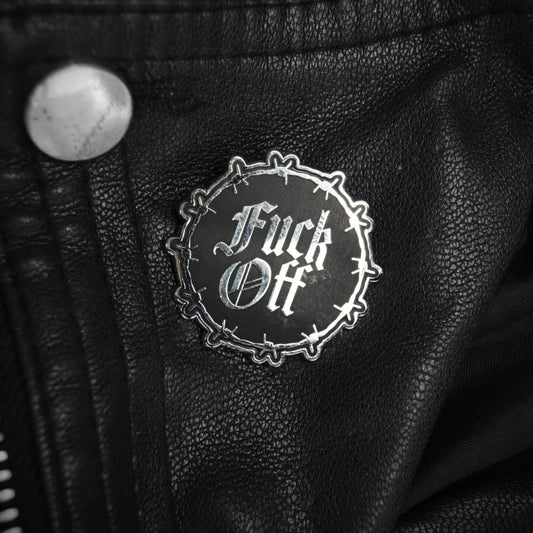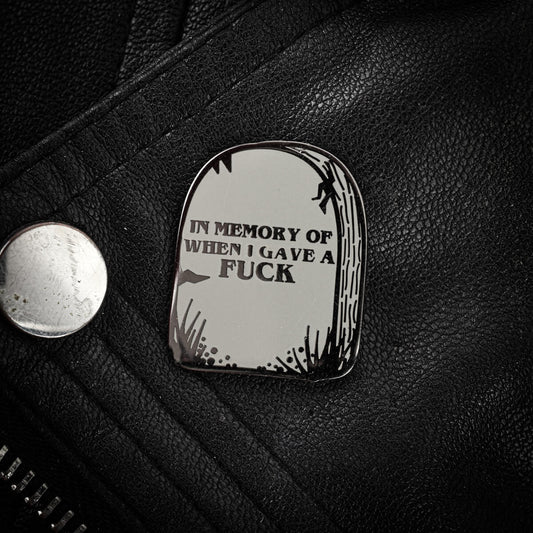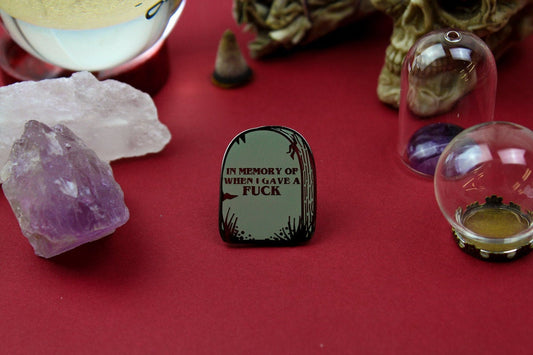
Are Goths Misunderstood?
Share
The goth subculture has always turned heads with its dark, edgy fashion and moody aesthetic. But while black clothes and heavy eyeliner are the most obvious markers, many people still get it completely wrong when it comes to what goth is really about. From associating goth with dangerous behaviour to dismissing it as just a "teenage phase," misconceptions about this subculture run deep. These misunderstandings reduce a rich, creative community to a set of tired clichés, overlooking the depth and diversity that goth actually represents.
At its core, goth is more than just a look - it's a way of exploring the darker sides of life through music, art, fashion, and self-expression. But instead of being understood as a meaningful cultural movement, goths are often painted with the same brush: people obsessed with death, always downbeat, or stuck in a rebellious teenage streak. And it's not just frustrating; these assumptions are often flat-out wrong.
Breaking down these myths is essential to giving goth culture the respect it deserves. Not only does it help others see beyond the surface, but it also busts the stereotype that goths are somehow outsiders or antisocial. The truth? Goth is creative, philosophical, and, in many ways, misunderstood.
So, here's our top 6 misconceptions about goths culture:
Misconception 1: Goths Are Obsessed with Death
One of the biggest misconceptions about goths is that they're fixated on death. Sure, there's a lot of black clothing, creepy jewellery, patches and a fascination with the macabre, but it's not about some morbid obsession with dying. For goths, it's more of an aesthetic appreciation of the darker side of life - a way of confronting themes like mortality, existentialism, and the human condition through art, music, and fashion.
Instead of being preoccupied with death, goth culture uses these themes to explore deeper questions about existence. It's philosophical, not fatalistic. From gothic literature to melancholic music, goths are drawn to the mystery of life and death as a way to reflect on emotions and the fragility of the human experience. It's about acknowledging the shadows rather than being consumed by them.
In short, it's not doom and gloom - it's about embracing the beauty in darkness and using it as a lens to see life in a more thoughtful, creative way.
Misconception 2: Goths Are Depressed or Negative
Just because goths embrace a darker aesthetic doesn't mean they're all brooding in a corner, drowning in negativity. The stereotype that goths are inherently depressed or have a bleak outlook on life couldn't be further from the truth. Yes, they might gravitate towards moody music, dark fashion, and melancholic themes, but it's about expression, not emotion.
Goth culture uses these darker elements as a form of artistic exploration, not a reflection of mental health. It's like watching a tragic movie or reading a haunting novel - you can appreciate the depth and emotion without it being a reflection of your own mood. For many goths, it's more about finding beauty in the shadows and using art, fashion, and music as creative outlets.
Bottom line: embracing dark aesthetics doesn't mean goths are walking around with a cloud over their heads. They're just as capable of joy and positivity as anyone else - they just happen to channel their creativity through a darker, more dramatic lens.

Misconception 3: Goth Is Just a Phase for Teenagers
One of the most tired clichés about goth culture is that it's just a rebellious teenage phase. You know, something you'll grow out of once you trade your combat boots for a sensible career and a more "grown-up" wardrobe. But here's the thing - goth is far from a fleeting fad. For many, it's a lasting lifestyle choice that carries well into adulthood and beyond.
Plenty of goths continue to embrace the culture long after their teenage years, with some even deepening their connection to the scene over time. Whether it's through music, fashion, or art, goths find ways to keep their identity alive, regardless of age. There are people in their 30s, 40s, and even 50s who are just as passionate about the goth aesthetic and community as they were in their teens, proving that goth isn't something you just grow out of - it's something you grow with.
So, no, it's not just a phase. For many, goth is a lifelong love affair with dark style, music, and creative expression. And they're rocking it well into their adult years.
Misconception 4: Goths Are Involved in Occult or Dangerous Activities
Let's clear this one up once and for all: just because goths are into dark aesthetics doesn't mean they're dabbling in occult practices or getting involved in anything dangerous. The stereotype that goths are all part of some secretive, occult underground is pure myth. Sure, some goths might be interested in spirituality or alternative beliefs, but it's no more common than in any other subculture.
The truth is, goth culture is incredibly diverse when it comes to beliefs and practices. Some goths might be into paganism or explore mystical themes, while others might not give it a second thought. Most are just there for the music, fashion, and the creative freedom goth culture offers. The idea that goth equals "dangerous" or "occult" is just an outdated, sensationalist narrative.
Bottom line: being a goth doesn't mean being part of some spooky underground cult. It's simply a subculture that embraces dark style, creativity, and individuality - without any sinister strings attached.
Misconception 5: All Goths Look and Dress the Same
If you think all goths wear the same black-on-black uniform, think again! The goth scene is full of style diversity, ranging from cybergoth's neon-drenched, futuristic look to the romantic, corset-clad elegance of Victorian goths. While black is a popular colour, the idea that all goths dress alike is a huge oversimplification.
In reality, goth fashion is all about personal expression. Whether it's mixing leather and lace, covering your combat boots with charms, or rocking platform boots with neon hair extensions, there's no one "right" way to be goth. From industrial styles to old-school deathrock looks, the goth wardrobe is as varied as the people in the scene. Goth fashion is more about individuality than conformity.
So no, there isn't some cookie-cutter goth look. The beauty of the culture lies in its rejection of uniformity and its embrace of creativity - whether you're decked out in spikes or lace, you're part of the goth family.
Misconception 6: Goths Are Antisocial or Don't Conform to Society
There's a persistent myth that goths are loners who shun society, but in reality, goth culture is incredibly social and community-driven. From packed festivals like Wave-Gotik-Treffen to bustling goth club nights and local meet-ups, goths are all about connecting with others who share their love for the darker side of life. It's not about being antisocial; it's about finding your people - and trust us, goths have a pretty tight-knit community.
Goths also navigate societal norms just like everyone else, whether it's in the workplace, at school, or in daily life. While they may express themselves differently through fashion or music, that doesn't mean they're rebels without a cause. Many goths balance their unique style with professional careers, family life, and everyday responsibilities, proving that you can maintain your identity while still functioning within society. They're just doing it with a bit more flair and eyeliner.
So, no, goths aren't hiding in the shadows, rejecting the world around them. They're building communities, thriving in their own way, and navigating life's norms - just with a darker, cooler twist.
Goth culture is so much more than the tired stereotypes people often associate with it. Far from being a morbid, antisocial phase, goth is a vibrant, diverse subculture full of creativity, community, and individuality. From the wide range of personal styles to the philosophical depth behind the darker aesthetic, goths embrace a rich tapestry of expression that defies the usual clichés.
It's time to ditch the misconceptions and see goth for what it really is: a lasting, inclusive, and dynamic culture that celebrates both the beauty in darkness and the freedom to be yourself. So next time you spot a goth, don't assume you know the story - there's always more beneath the surface.














